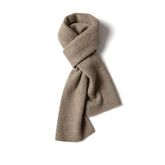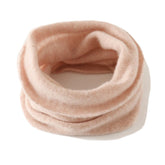Who Invented Silk? | History of Silk
Who Invented Silk?
Silk was invented in ancient China, with its discovery traditionally attributed to Empress Leizu around 2700 BCE. According to legend, she found silk when a silkworm cocoon fell into her tea, unraveling into delicate threads. The Chinese cultivated and guarded the secret of silk production for centuries, making it one of the most sought-after luxury goods in history.
Today, silk remains a symbol of elegance and comfort. If you're looking to add this timeless material to your wardrobe or home, explore Slipintosoft’s collection for exquisite silk pieces.
Now, let's find out about how silk in ancient China originated!
The History of Silk
The legend of how silk was discovered dates back to 2696 BC, credited to Empress Si Ling Chi (also called Leizu or Hsi-Ling-Shih). According to the popular myth, she discovered silk strands when a silkworm cocoon fell into her tea cup.
Intrigued by the shimmering threads, the Empress began to unravel them. When she saw how beautiful they were, she took the threads back to her palace and instructed her servants to spin them into a garment.
Legend has it that her fascination led to the creation of the first silk cloth and eventually, to the development of sericulture, the cultivation of silkworms for silk production.
Empress Si Ling Chi is celebrated as the “Goddess of Silk” or “Silkworm Mother”. Her husband, the Yellow Emperor, is credited with creating the first silk loom, which revolutionized textile production.
Silk in Ancient Chinese Society
At first, silk was a luxury reserved for emperors, their families, and high-ranking officials in ancient China. The emperor would wear white silk in the imperial palace and yellow silk at night, signifying his royal status.
Over time, especially during the Qing Dynasty, these strict regulations were relaxed, allowing regular people access to silk. During the Han Dynasty, silk became an important economic asset, used for tax payments and even as currency.
As its production increased, silk gradually spread among various social classes, becoming a symbol of wealth and cultural significance throughout Chinese society.
The Spread of Silk Beyond China


Silk originated in China, but gradually became a coveted material worldwide. The secrecy surrounding silk production was intense. However, as trade routes expanded, the allure of this silky fabric captivated various civilizations, leading to the spread of this luxurious fabric beyond China’s borders.
Early Silk Trade
Chinese silk exports began flourishing even before the establishment of the Silk Road. Evidence of this early trade includes silk found in an ancient Egyptian mummy dating back to 1070 BC in Deir el-Medina.
Silk has also been discovered in the burial sites of various ancient civilizations, showing a widespread appreciation and demand. This early trade included interactions with Egypt, Persia, India, and the Greek and Roman empires, an indication of silk’s extensive reach and influence.
The Silk Road
The Silk Road was established by the Han Dynasty in 130 BC, a big milestone in global trade. This network of trade routes connected China with the Middle East and Europe, allowing for not just the exchange of goods but also culture and ideas.
The Silk Road was operational for over 15 centuries! Its operation came to an end when the Ottoman Empire shut it down in AD 1453, marking the close of an era in trade history.
Spread of Silk Production to Other Regions
The techniques of silk production eventually spread to other regions, impacting local economies and industries:
- Korea: Silk production began around 200 BC, introduced by Chinese immigrants who brought their knowledge and skills to the region.
- Japan: The art of silk-making reached Japan in the 4th century AD, possibly via the Korean peninsula, and became integral to Japanese culture.
- India: During the Gupta period (AD 400 to 600), a Buddhist monk brought silk-making techniques to India, leading to a thriving silk industry.
- Persia: By the 6th century, silk-making was well established in Persia, contributing to its rich textile history.
- Byzantine Empire: In AD 550, monks smuggled silkworm eggs into the Byzantine Empire, sparking local silk production.
- Italy: During the Second Crusade (AD 1147–50), skilled weavers were brought from Constantinople to Italy, establishing a significant silk-weaving tradition.
- France: In 1466, a national silk industry was established in Lyon, which became a renowned center for silk production in Europe.
Silk Production Techniques
Silk production, also known as sericulture, is a methodical process involving the cultivation of silkworms and the extraction of silk fibers from their cocoons. Each cocoon can produce up to 900 meters of silk thread, which is then spun into yarn and woven into fabric.
Mulberry Silk Production
Mulberry silk is the most common and highest quality silk, produced by the Bombyx mori species of silkworms. These silkworms are exclusively fed mulberry leaves, which enhances the quality of the silk they produce.
The production process involves carefully raising the silkworms and making sure they have a constant supply of fresh mulberry leaves. Once the silkworms spin their cocoons, the silk threads are extracted by soaking the cocoons in hot water to loosen the threads.
This type of silk is environmentally beneficial because it produces lower carbon emissions compared to cotton and is biodegradable. It’s also free from harsh chemicals, making it a sustainable choice.
Types of Silk
Silk comes in various types, each with unique characteristics and cultural significance. Grade 6A Mulberry Silk is considered the highest quality silk thanks to its amazing texture and durability.
Japanese silk varieties include Nishijin Ori, known for its intricate designs; Chirimen, recognized for its crinkled texture; and Tsumugi, valued for its rustic appearance.
Indian silk is renowned worldwide, with varieties like Banarasi, famous for its gold and silver brocade; Muga, known for its natural golden hue; and Tussar (or Tussah silk), which is appreciated for its rich texture.
Other notable Indian silks include Mysore, Chandri, Bhagalpuri, Paithani, Kanchipuram, and Art silk, each representing the rich heritage and craftsmanship of different regions in India.
Modern Silk Industry and Uses


The modern silk industry has evolved significantly from its ancient origins, with contemporary applications and advancements enhancing its relevance. Today, silk is not only used in traditional textiles but also in various industrial and technological applications.
Contemporary Silk Production
China remains the largest silk producer, accounting for over two-thirds of the global market share. Modern techniques and technologies have enabled the production of high-quality silk. Advances in sericulture, the practice of breeding silkworms, have also contributed to higher yields and superior silk.
Modern Applications of Silk
What is silk if not versatile? In the arts, silk is a popular material for wall decorations due to its aesthetic appeal and durability. It’s also used in making parachutes, where its strength and lightweight nature are essential. Interestingly, silk is also found in bicycle tires, because of its flexibility and resilience.
In the medical field, silk is used for surgical sutures, taking advantage of its biocompatibility and strength. Lastly, silk remains a staple in bridal and formal wear, ties, scarves, upholstery, and bedding. Silk clothing and bedding is valued for its luxurious feel and elegant appearance.
Silk in Fashion and Luxury
Silk has long been associated with fashion and luxury, with historical roots in Europe. Lyon, France, became a center of the European silk trade in the 16th century, known for its exquisite craftsmanship and unique styles.
By the 18th century, French silk had become a major export, known and loved for its quality and elegance. The development of distinctive European silk styles set trends in fashion and luxury that continue to influence contemporary designs. Today, wearing silk is synonymous with high fashion, used by designers to create sophisticated and timeless pieces.
The Significance of Silk Today
Silk continues to be a highly valued material in today’s world, known for its luxurious texture and versatile applications. This natural fiber is renowned for its softness, strength, and shimmering appearance, making it a favorite in fashion, home decor, and personal care products.
Health and Wellness Benefits
Silk offers numerous health and wellness benefits, making it an ideal choice for various personal care products.
- Hypoallergenic Properties: Silk is naturally resistant to dust mites, mold, and other allergens, making it a perfect option for those with allergies or sensitive skin.
- Antiaging Effects: The smooth texture of silk reduces friction on the skin, which can help minimize the formation of wrinkles and fine lines, keeping you looking younger.
- Thermoregulation Features: Silk helps maintain a comfortable body temperature by wicking moisture away and regulating heat, helping you get a good night’s sleep regardless of the season.
- Benefits for Hair and Skin: Silk’s gentle surface helps prevent hair breakage and skin irritation, keeping both hair and skin healthier over time.
Silk in the Modern Bedroom
Silk fabric has gained popularity in modern bedrooms, especially through silk bedding, which includes sheets, pillowcases, and duvet covers. North American consumers appreciate silk bedding for its elegance and comfort, adding a touch of luxury to their sleep environment. Browse through Slipintosoft’s collection to upgrade your bedroom style!
The natural properties of silk provide a calming effect on the nervous system, promoting relaxation and improving sleep quality. This makes silk bedding not only a stylish choice, but also a beneficial one for overall well-being, enhancing your sleep experience and supporting better health.
FAQs
Is Silk Considered Environmentally Friendly?
Silk production is more environmentally friendly than many other textiles because it needs fewer chemicals and less water. Also, silk is biodegradable and has lower carbon emissions compared to cotton.
Why is Silk So Expensive?
Silk is expensive due to the labor-intensive process of its production, the time required to cultivate silkworms and harvest silk, and the meticulous care needed to produce high-quality fibers. The luxurious feel and various benefits of silk textiles also contribute to its high cost.
Back to Top: Who Invented Silk? | History of Silk, Invention in Ancient China










